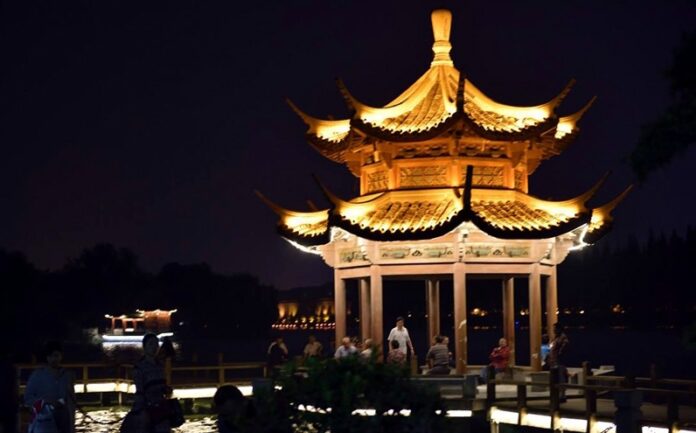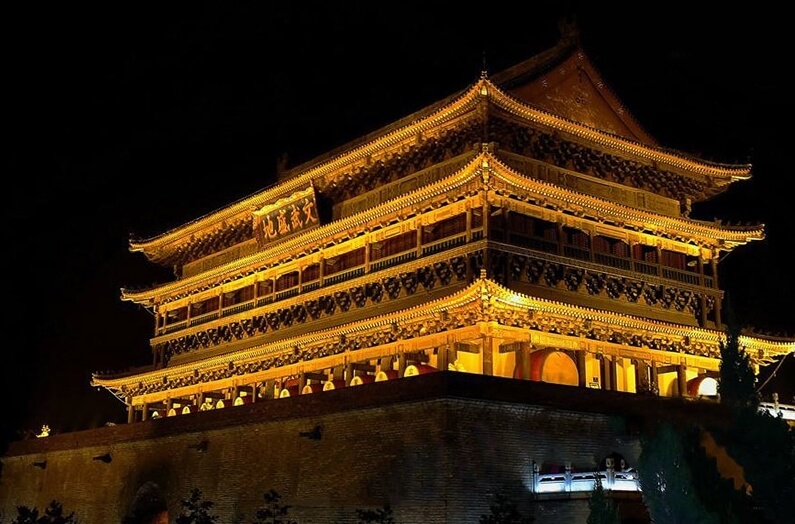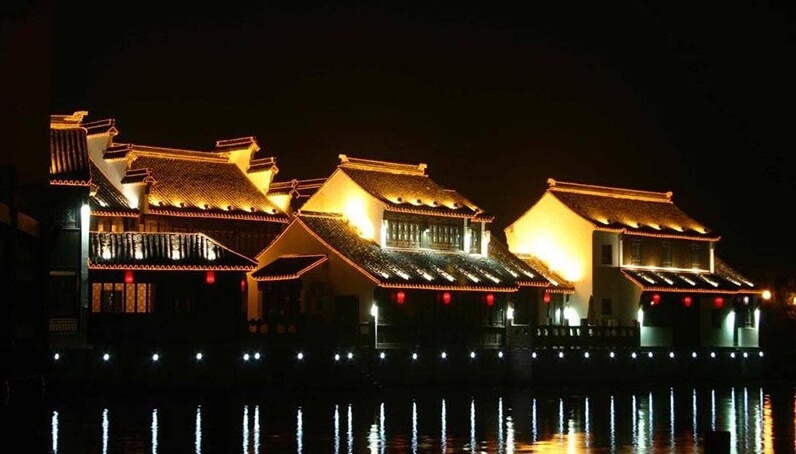
Ancient buildings carry the history of a city or even a dynasty, and reflect profound cultural heritage. By combining the art of lighting, modern lighting designers not only convey the architectural vocabulary and cultural charm of these ancient buildings, but also endow them with ancient buildings. The new vitality better shows the characteristics and outline of the building in the dark night. As a historical and cultural heritage ancient building, it is a non-renewable “resource”, therefore, it is necessary to avoid damage caused by lighting when designing its lighting. So, how can lighting design better show the unique characteristics of ancient buildings?

Show the overall light perception with “face”
Presenting the characteristics of ancient buildings from the “face” is currently the main expression technique used by lighting designers in ancient architectural lighting projects. Ancient buildings should not express the details of the building too much, but should express the big face of the building, instead of the so-called “every column must be hit, every line must be hooked”. Because there are too many details of carved beams and painted buildings in Chinese architecture, if each one needs to be illuminated carefully, it is difficult to hide all the lamps. We only need to show the volume of the building itself. Through different light intensities, the contrast of light and shadow is produced, which makes it naturally produce a’three-dimensional sense’ at night, thereby shaping the overall night atmosphere.
In real projects, most of them are antique buildings. The lighting design of this type of building has more space: one is the miniaturization of lamps and lanterns, and the main components of the building are displayed through diffuse reflection; the second is based on the function of ancient buildings. , Or the main features of the structure are focused on performance, and the light can be accurately transmitted. The third is to do some projection and light show according to the place, increase the expression and atmosphere of the place, and adapt to the aesthetic needs of modern people.

Respect and protect history and culture
For the ancient buildings that belong to the historical and cultural heritage, the expression method is roughly the same as that of the antique buildings. However, because of its huge historical value, the lighting design should be based on respect and protection, and minimize the lamps fixed in the building itself. In addition, every ancient Chinese building that has been passed down for many years has a specific historical background. The lighting design for it requires designers to fully understand the historical background of the ancient building in advance. According to the building’s use function, architectural style, structural characteristics, and decoration The surface materials, decorative patterns and the environment in which it is located, grasp the key parts of the ancient architectural lighting, and fully demonstrate the classical cultural value of the ancient buildings.
Previously, the lighting design of many ancient Chinese buildings often used the edging method to outline the outline of the building with bright lines, but the effect of the outline lamp only highlights the lamp itself, and cannot perfectly reflect the level, detail, and color of the building. And other content. The performance method of long-distance projection uses light and shadow levels and different light colors to show the characteristics of the building while creating a consistent atmosphere.
Show the courtyard space “with virtual and real”
“Using the virtual to complement the reality” is a way of expressing the lighting design of ancient courtyard buildings. Modern buildings are mostly in the form of three-dimensional statues. Illuminating the building is to cast light on the building itself. The night view of the building is embodied in a solid form; while most of the ancient Chinese buildings use courtyards as the basic unit, which is composed of courtyards to form a complex Therefore, the object that the lighting needs to express is actually the courtyard. The designer needs to design the lighting design for such ancient buildings that enclose the courtyard. Although the buildings are illuminated, they are not themselves to be shaped, but enclosed by them. patio. That is to say, it illuminates the physical building, but it expresses the “virtual” courtyard space.
